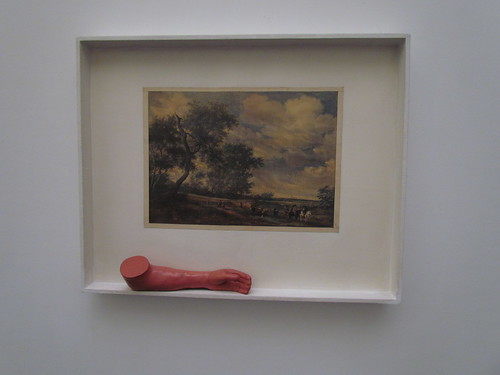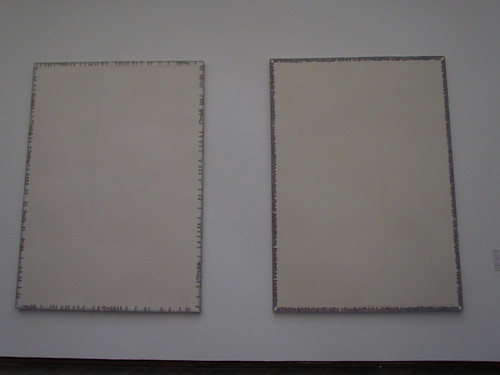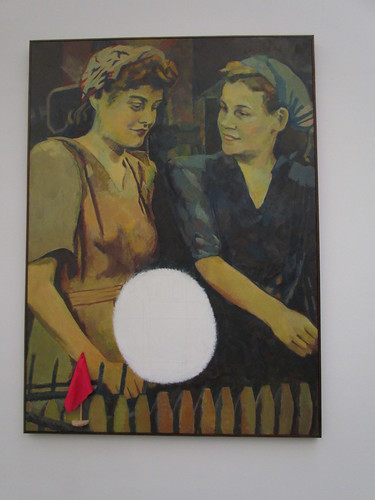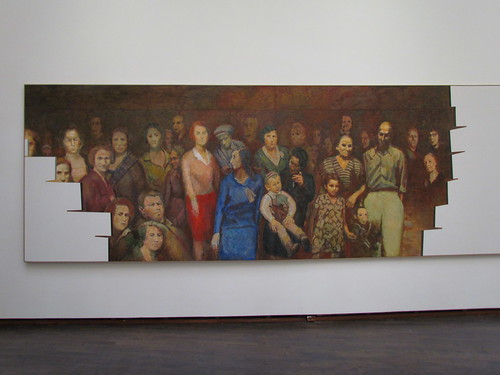Ilya Kabakov
Henie Onstad Kunstsenter
24.5.-26.9.12
paintings
At first glance the paintings appear as rather dull political correct art from the Soviet Union. And that is probably correct too. But then there is a twist to it turning it all around. Nothing is said directly, but these twists are what makes these paintings unique. It might be some added features or areas left unpainted. What attracts the attention are these features, not the rest.

Hand and Ruisdael's reproduction
A rather dull romantic pastoral scene is transformed to a backdrop just by placing this red cut-off hand in the frame.

Along the edge 2&3
The large areas of white are not important at all, but the ant-small people encircling the area are.

Charles Rosenthal: Two weavers
A classic Soviet propaganda painting showing happy working women, assumely painted by "Charles Rosenthal". Even a red flag is added for those who really do not understand that this is about communism. But that white patch, what is it hiding? What was left unpainted?

They are looking
People from different family portraits are combined together and most of them are looking towards you. But some are not painted, or are painted over. Who were they, and why were they erased? Or does these areas symbolise people that was not allowed to exist at all. Part of history and the memory of people can be erased in a totalitarian state. But it is much harder to erase the empty spaces that were left.